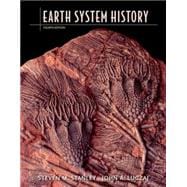
Note: Supplemental materials are not guaranteed with Rental or Used book purchases.
Purchase Benefits
What is included with this book?
John Luczaj is a field geologist interested in sedimentology, geochemistry, and hydrogeology, specializing in diagenesis in sedimentary systems. He has conducted research on hydrothermal dolomitization, fluid-inclusions in minerals, groundwater geochemistry and aquifer recovery, geologic mapping, geomorphology, and Holocene cave deposits. One of his important contributions was the first successful dating of diagenetic dolomite using the U-Pb method.
He received a B.S. in geology from the University of Wisconsin – Oshkosh in 1993, an M.S. in geology from the University of Kansas in 1995, and a Ph.D. in geology from Johns Hopkins University in 2000. He worked as a USGS-NAGT Summer Trainee at the Hawaiian Volcano Observatory in 1993, as a visiting assistant professor at Towson University (1999-2000) and Western Michigan University (2000-2002), and as an environmental consultant from 2002-2005 before joining the faculty at the University of Wisconsin-Green Bay. He is currently chair of the Geoscience unit in the Department of Natural & Applied Sciences at UW-Green Bay. In conjunction with the Wisconsin Geological & Natural History Survey, he completed a county-wide bedrock geologic mapping project in 2011.
Dr. Luczaj teaches courses in physical geology, historical geology, sedimentology & stratigraphy, glacial geology, regional field geology, and radioactivity. His current research focuses on the groundwater chemistry of confined aquifer systems in eastern Wisconsin, the diagenesis of sedimentary rocks, including petroleum reservoirs, and he has recently completed a review article on the geology of the Niagara escarpment in Wisconsin. He received the Vincent E. Nelson Award in 2001 from the American Association of Petroleum Geologists for his work on hydrothermal dolomitization.
John Luczaj is a field geologist interested in sedimentology, geochemistry, and hydrogeology, specializing in diagenesis in sedimentary systems. He has conducted research on hydrothermal dolomitization, fluid-inclusions in minerals, groundwater geochemistry and aquifer recovery, geologic mapping, geomorphology, and Holocene cave deposits. One of his important contributions was the first successful dating of diagenetic dolomite using the U-Pb method.
He received a B.S. in geology from the University of Wisconsin – Oshkosh in 1993, an M.S. in geology from the University of Kansas in 1995, and a Ph.D. in geology from Johns Hopkins University in 2000. He worked as a USGS-NAGT Summer Trainee at the Hawaiian Volcano Observatory in 1993, as a visiting assistant professor at Towson University (1999-2000) and Western Michigan University (2000-2002), and as an environmental consultant from 2002-2005 before joining the faculty at the University of Wisconsin-Green Bay. He is currently chair of the Geoscience unit in the Department of Natural & Applied Sciences at UW-Green Bay. In conjunction with the Wisconsin Geological & Natural History Survey, he completed a county-wide bedrock geologic mapping project in 2011.
Dr. Luczaj teaches courses in physical geology, historical geology, sedimentology & stratigraphy, glacial geology, regional field geology, and radioactivity. His current research focuses on the groundwater chemistry of confined aquifer systems in eastern Wisconsin, the diagenesis of sedimentary rocks, including petroleum reservoirs, and he has recently completed a review article on the geology of the Niagara escarpment in Wisconsin. He received the Vincent E. Nelson Award in 2001 from the American Association of Petroleum Geologists for his work on hydrothermal dolomitization.
Part I
Materials, Processes, and Principles
CHAPTER 1
Earth as a System
CHAPTER 2
Rock-Forming Minerals and Rocks
CHAPTER 3
The Diversity of Life
CHAPTER 4
Environments and Life
CHAPTER 5
Sedimentary Environments
CHAPTER 6
Correlation and Dating of the Rock Record
CHAPTER 7
Evolution and the Fossil Record
CHAPTER 8
The Theory of Plate Tectonics
CHAPTER 9
Continental Tectonics and Mountain Chains
CHAPTER 10
Major Geochemical Cycles
Part II
The Story of Earth
CHAPTER 11
The Hadean and Archean Eons of Precambrian Time
CHAPTER 12
The Proterozoic Eon of Precambrian Time
CHAPTER 13
The Early Paleozoic World
CHAPTER 14
The Middle Paleozoic World
CHAPTER 15
The Late Paleozoic World
CHAPTER 16
The Early Mesozoic Era
CHAPTER 17
The Cretaceous World
CHAPTER 18
The Paleogene World
CHAPTER 19
The Late Cenozoic World Before the Holocene
CHAPTER 20
The Retreat of Glaciers and the Holocene
The New copy of this book will include any supplemental materials advertised. Please check the title of the book to determine if it should include any access cards, study guides, lab manuals, CDs, etc.
The Used, Rental and eBook copies of this book are not guaranteed to include any supplemental materials. Typically, only the book itself is included. This is true even if the title states it includes any access cards, study guides, lab manuals, CDs, etc.